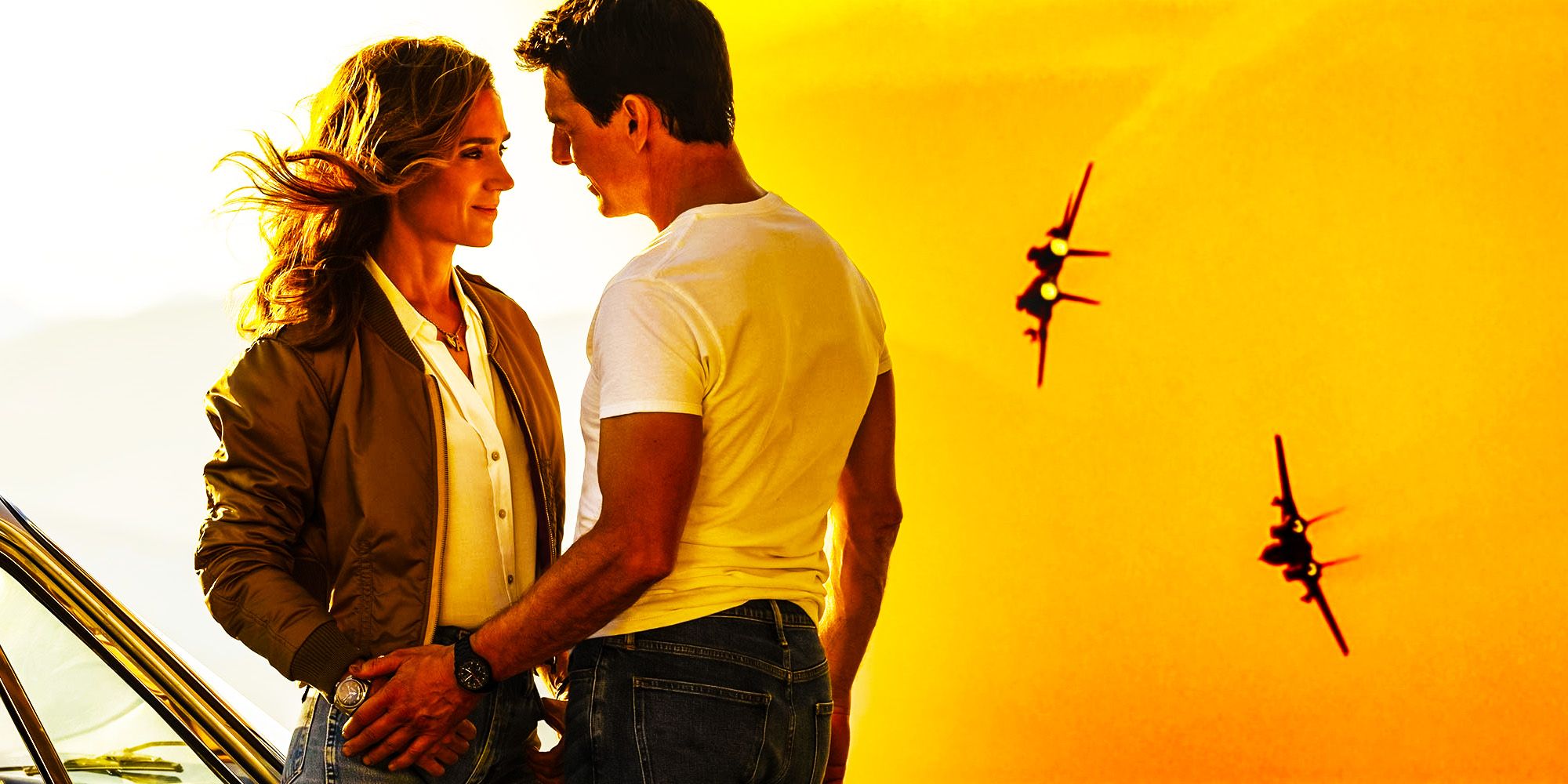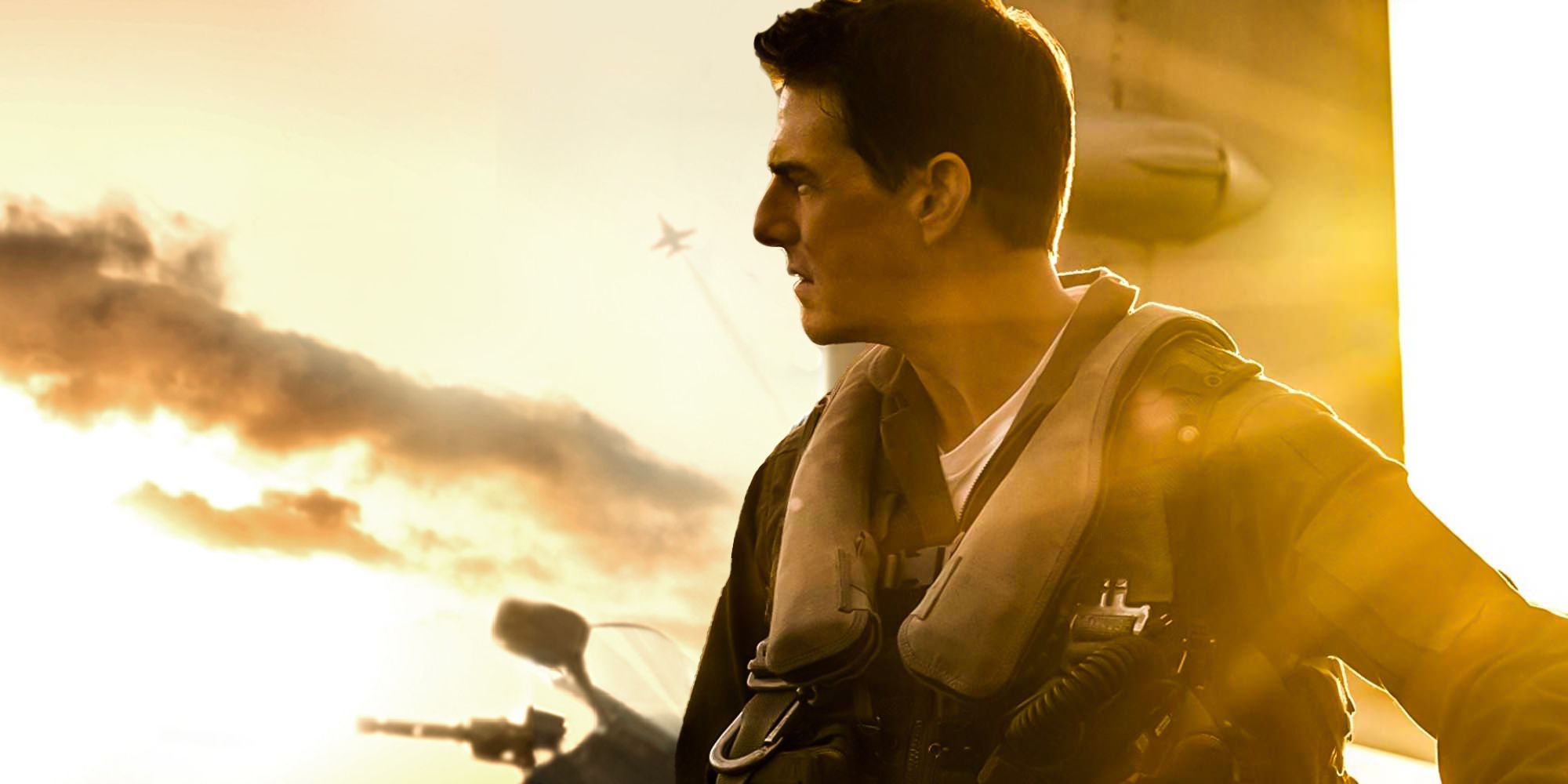With its final shot of a plane flying into the sunset, Top Gun: Maverick brings back an old end-credits tradition that adds to the movie's nostalgia. The Tom Cruise-led blockbuster has taken movie theaters around the world by storm, with Top Gun: Maverick grossing more than $1 billion at the box office and becoming just the second post-pandemic film (after Spider-Man: No Way Home) to do so. Arriving long after the 1986 release of the original Top Gun, Maverick has clearly been one of the most resonant legacy sequels of the modern age.
Top Gun: Maverick adds a special treat for audiences when it begins its end credits. As Lady Gaga's "Hold My Hand" plays on the soundtrack and the credits begin their upward crawl, the sequel shows the plane piloted by Pete "Maverick" Mitchell (Cruise), with his rekindled love interest, Penny (Jennifer Connelly), aboard, flying against a sunset. This sequence, showcasing Tom Cruise's very own P-51 Mustang, follows a credit montage of the principal cast of the movie and is not only a mirror to the original Top Gun's end credits, but it harkens back to a bygone era of movies.
RELATED: Top Gun 2's Best Scene Copies A Box Office Bomb From The '80s
Prior to the turn of the century, end credits set against ongoing footage, such as sunsets or cars driving along a highway, were used with some frequency. The original Top Gun itself did this with its end credits, as did 1989's Indiana Jones and the Last Crusade, the 1990s drama Good Will Hunting, and many others. While that trend has fallen out of fashion (leaving post-credits scenes to become the dominant choice), Top Gun: Maverick bringing it back heightens the movie's charm of being a nostalgic throwback.
Top Gun: Maverick's End Credits Add To Its Nostalgia
Top Gun: Maverick features many nostalgic components, both from both its predecessor and from the 1980s in general. These include Kenny Loggins' "Danger Zone" playing during the opening credits, just as it did in the original, and Miles Teller performing "Great Balls of Fire," like his character's father before him. In particular, having both the opening and end credit sequences follow the examples from the first Top Gun tugs at the audience's heartstrings, as it makes them think back to that era of movies.
The Top Gun sequel is far from the only big hit in recent years to bank heavily on audience nostalgia, but Maverick and Penny's flight into the sunset successfully trades on nostalgia in ways that few other big movies have even tried. With the whole movie being a nostalgic sonnet, Top Gun: Maverick makes sure audiences leave the theater soaring down memory lane.


